How to Successfully Harden Off Your Seedlings and Young Plants
Did you know your overwintering plants and young seedlings must acclimate to the outdoor elements before planting them in the garden? Follow along as I walk you through the hardening-off process of your seedlings and plants before transplanting them outside.
Hardening off indoor plants is the transition period from a controlled environment to harsh outdoor elements. Acclimating young plants and seedlings is the best way to help them become accustomed to the natural environment.
Before I knew anything about plants needing to acclimate to the outdoor elements, I made a trip to Costco. It was my yearly geranium purchase, and I couldn’t wait to get those beautiful annuals planted in my window boxes.
I didn’t realize these plants had been indoors for quite a while. They went into shock when I planted them outdoors the next day. Lesson learned!
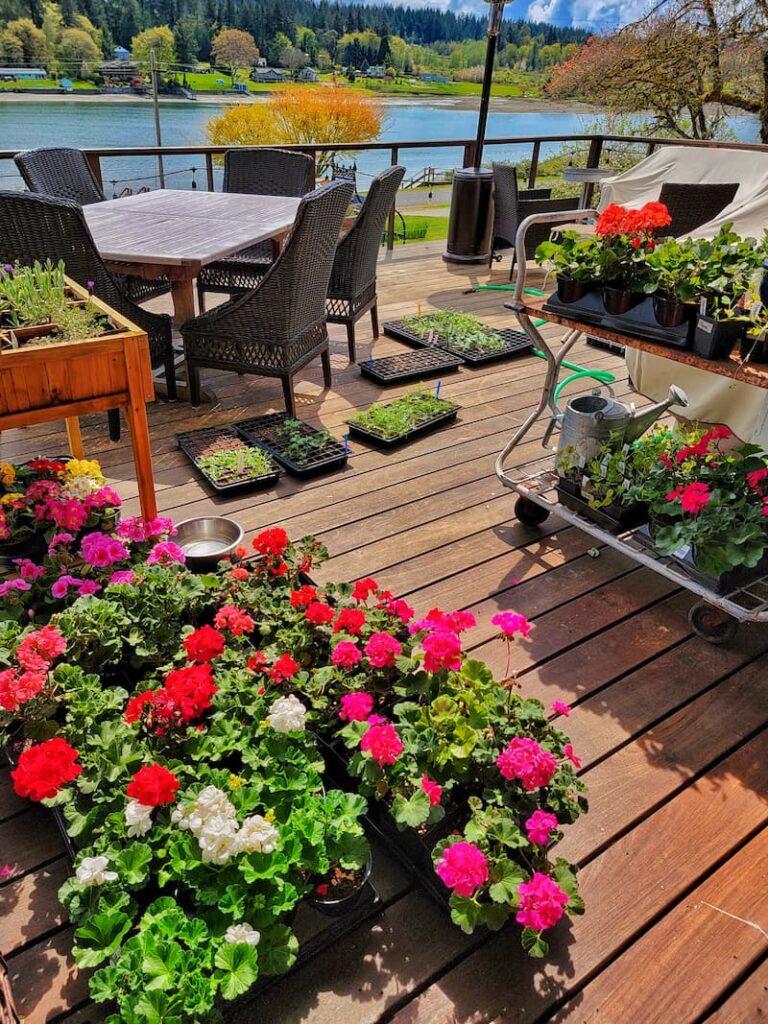
As an Amazon affiliate, I earn from qualifying purchases at no extra cost to you. My blog contains other affiliate links for your convenience as well. Click here to read my privacy policy.
I’m a self-taught hobby gardener, not a Master Gardener. Everything I share with you on my blog is my opinion and things that have worked for me.
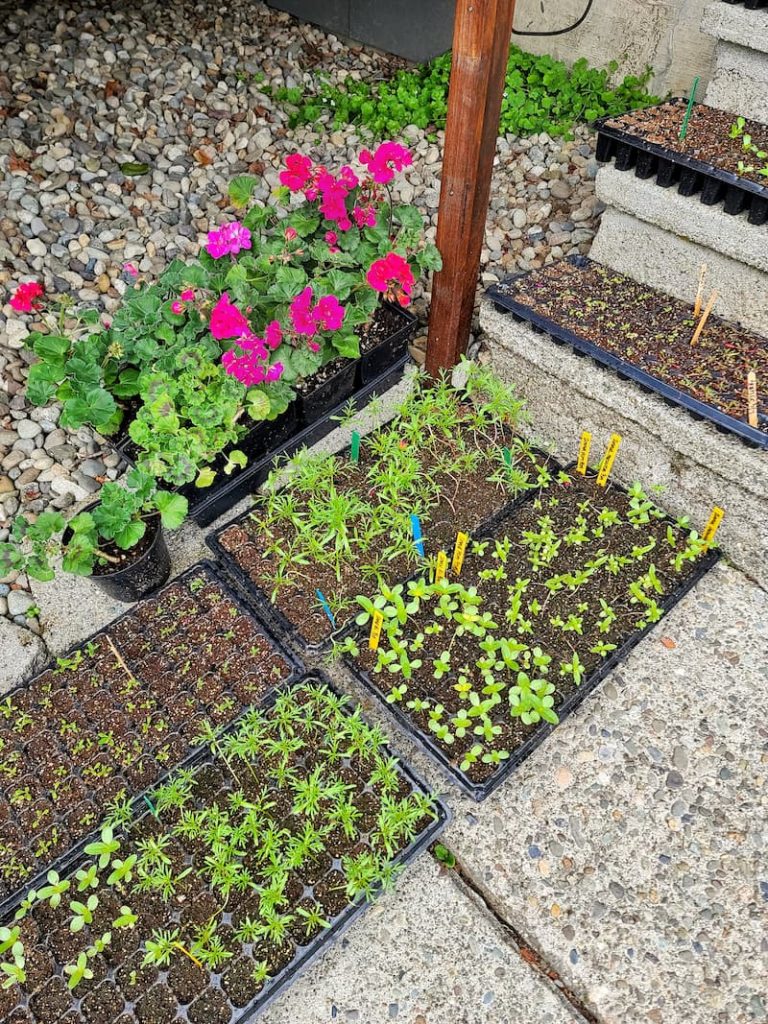
What is Hardening Off?
Hardening off your plants and young seedlings gradually exposes them to outdoor growing conditions, such as wind, sun, and temperature fluctuations. This process helps tender plants and seedlings acclimate to the outdoor environment so they can survive and thrive when transplanted in the garden.
This is done by gradually increasing the time your plants and seedlings spend outdoors each day to longer periods of time. The initial day will start with only a few hours on the first day and eventually build up to a full day.
Many new gardeners skip this step, not knowing that their indoor seedlings and plants need to get used to the outdoor temperatures and elements after being sheltered for so long. By the way, I was one of those new gardeners.
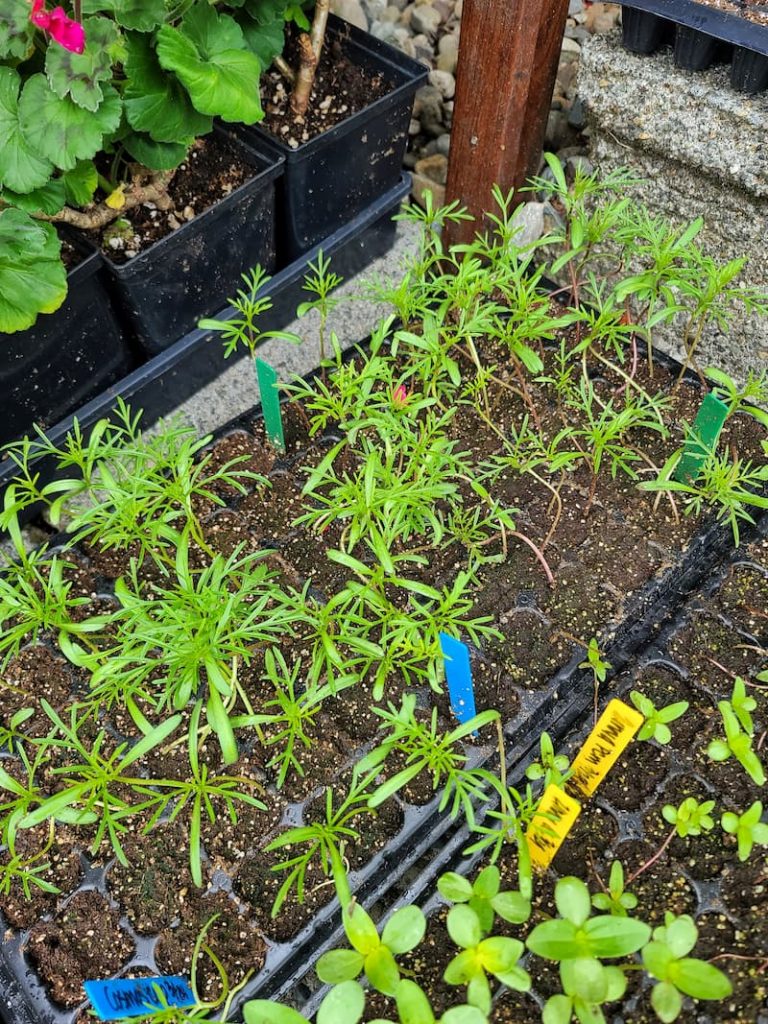
Why is Hardening Off Flowers So Important?
Hardening off your young plants and seedlings is an important step in the growth process because it prepares them to withstand the elements of the outside environment.
This process allows the plants to acclimate to the temperature, and light changes slowly. This helps to reduce the risk of transplant shock, which can lead to poor growth and even death.
Hardening off your newer plants thickens the cuticles on the leaves, so they lose less water when exposed to the elements.
Seed Starting Supplies
Check out my favorite supplies and tools for starting seeds indoors. Whether you’re looking for grow lights or a seed starting mix, you’ll find what I use in my own greenhouse.
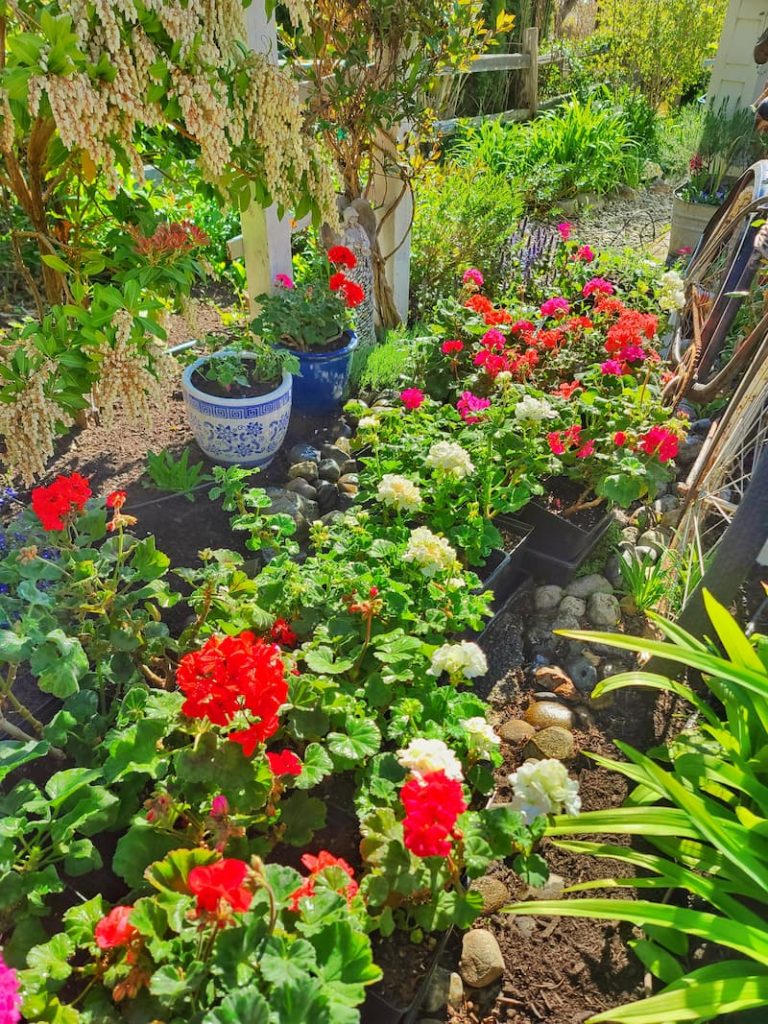
How to Harden Off Seedlings
Each day, your plants and indoor seedlings move from their existing indoor space to a location where they can tolerate more hours of exposure to outdoor conditions each day.
It’s important to water the plants and keep them from drying out while going through this process.
How Big Should Seedlings Be Before Hardening Off?
Determining the right time to begin the hardening-off process for your seedlings isn’t about height alone. It’s more about their overall development and readiness to transition to outdoor conditions.
Here’s a guide to know when your seedlings are ready to brave the great outdoors.
True Leaves
Seedlings should have at least 2-3 sets of true leaves, not just the initial seed leaves (cotyledons). True leaves signify that the plant has moved beyond the initial germination stage and is beginning to grow in earnest.
Stem Strength
Your seedlings should have sturdy stems. This doesn’t mean they need to be thick, but they shouldn’t be leggy or weak. If they’ve been growing under lights, ensure they’ve had some fan or breeze exposure indoors to encourage strong stem development.
Root Development
Ideally, the seedlings should have well-developed roots that fill the container they were started in, but aren’t yet circling the pot or becoming root-bound. This indicates they’re robust enough to handle the transition but adaptable to new soil conditions.
General Health
Look for seedlings that appear healthy and vibrant. They should be free of disease and significant pest problems. Healthy seedlings will have a better chance of surviving the stresses of moving outdoors.
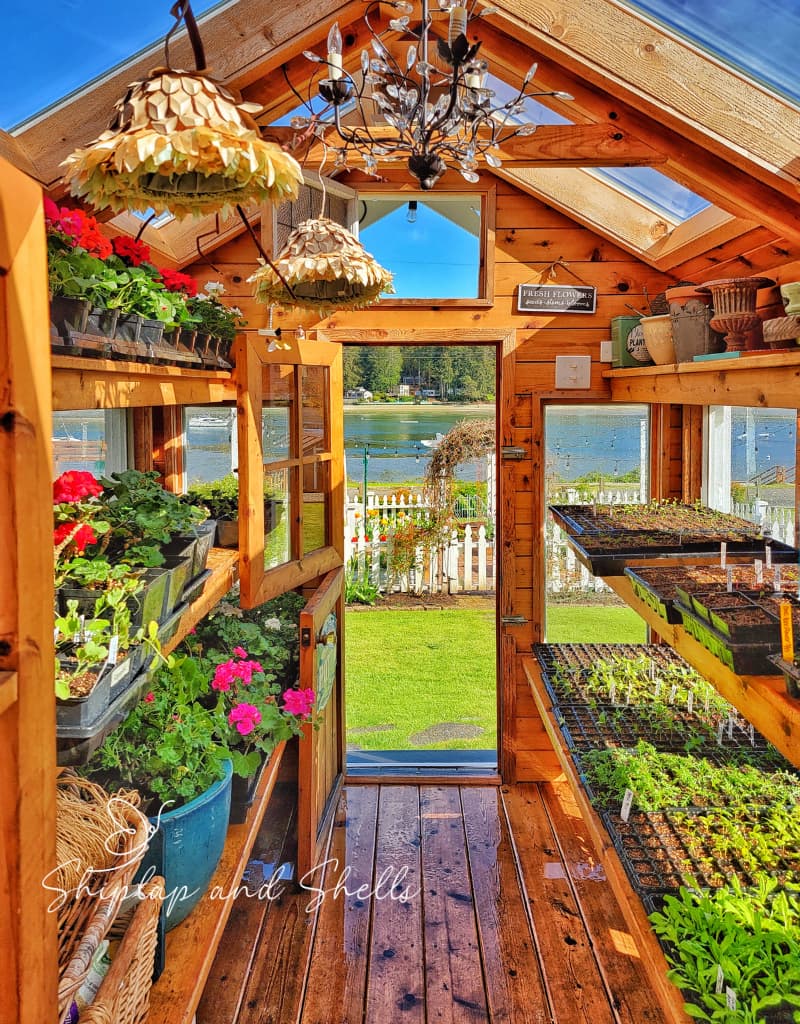
Introduce Your Plants to the Outdoors
Begin the hardening-off process 7-10 days before transplanting seedlings or plants in the garden. Most seedlings are typically planted outdoors in spring after any risk of frost has passed. However, cold-hardy plants can be planted outdoors 2-4 weeks before the last frost date.
When the spring temperatures are above 45°F, set the seedlings in a sheltered spot with shade outdoors, protected from full sun and wind for one hour on day one.
Water the plants thoroughly before bringing them outdoors. When they reach the time limit, move the seedlings back indoors.
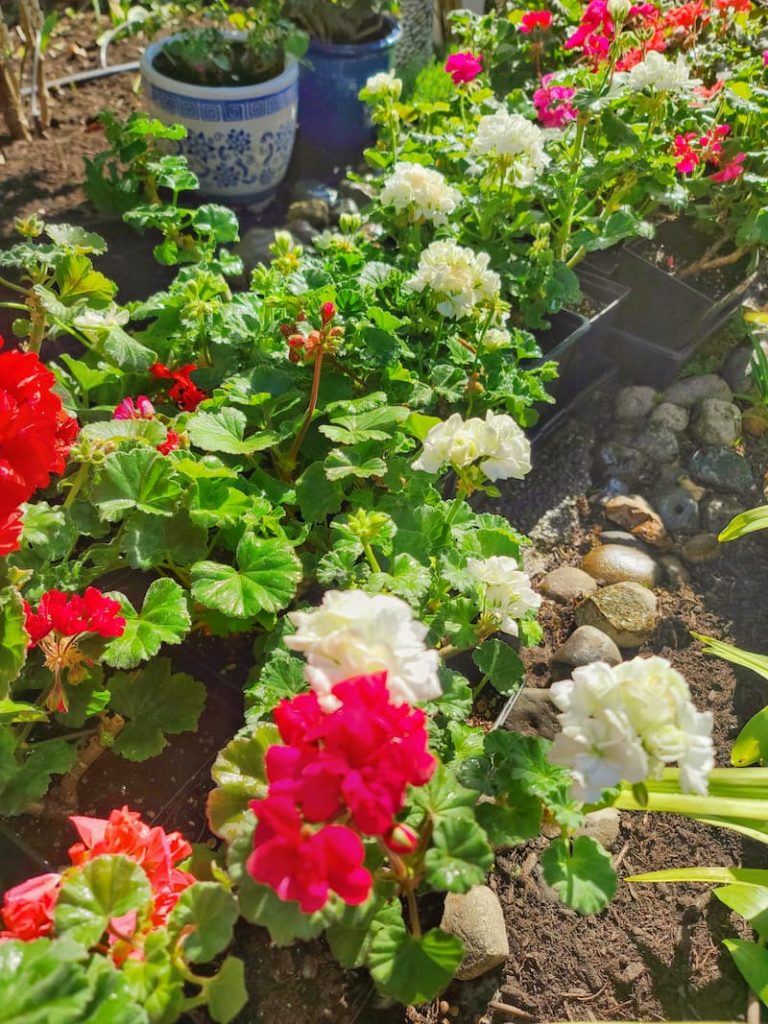
Increase Outdoor Time Gradually
After placing the plants in a protected spot for 1-2 hours on the first day, slowly increase the amount of time each day after. Bring the plants in at night, especially on cool evenings when the nighttime temperatures drop below 55° F.
Gradually move the plants outdoors each day over several days, introducing them to increasing amounts of sun and wind each day.
When introducing the plants to direct sunlight, move them after 10-15 minutes of direct sunlight the first day and gradually increase the time each day. During this time, monitor your plants for sun scald or other signs of stress, such as wilting or yellowing leaves.
The length of time a seedling needs to harden off depends on the type of plant and temperatures outside.
When to Leave Seedlings Outdoors Overnight
The seedlings should be able to handle increasing amounts of sunlight and can be left outdoors overnight if temperatures remain at least 50°F both day and night, t
How Long Does It Take to Harden Off Plants?
Hardening off your seedlings takes time.
Hardening off your plants is like preparing them for a grand adventure outdoors, and it’s a step that requires patience and care. Generally, the hardening off process takes about 7 to 10 days.
An Example Hardening Off Schedule
Here’s a guide to ease your young seedlings and plants into their new environment:
Day 1-2
Start by placing your plants outside in a sheltered, partially shaded spot for 1-2 hours. This spot should be protected from strong winds and direct sunlight to prevent overwhelming your plants. Think of it as their cozy introduction to the great outdoors.
Day 3-4
Gradually increase their outdoor stay by an hour or two, keeping them in that lovely shaded area. If the weather cooperates, you can introduce a bit more sunlight.
Day 5-7
By now, your plants are starting to enjoy their outdoor time. You can extend their stay to about 4-6 hours, introducing more direct sunlight. Keep an eye on them.
Day 8-10
It’s time to ramp up to a full day’s exposure. Let them experience the sun, the breeze, and maybe even a gentle rain. By the end of this period, your plants should be ready to stay out overnight as long as temperatures are suitable.
Transition
After these gradual steps, your plants should be acclimated and ready to move to their permanent outdoor home. Ensure the forecast is clear of frost or extreme weather that could shock them after all their hard work.
Remember, this schedule can be adjusted based on how your plants respond and the specific conditions of your local climate. Some plants might take a bit longer, and that’s perfectly okay. The goal is to ensure they’re fully acclimated and happy in their new environment.
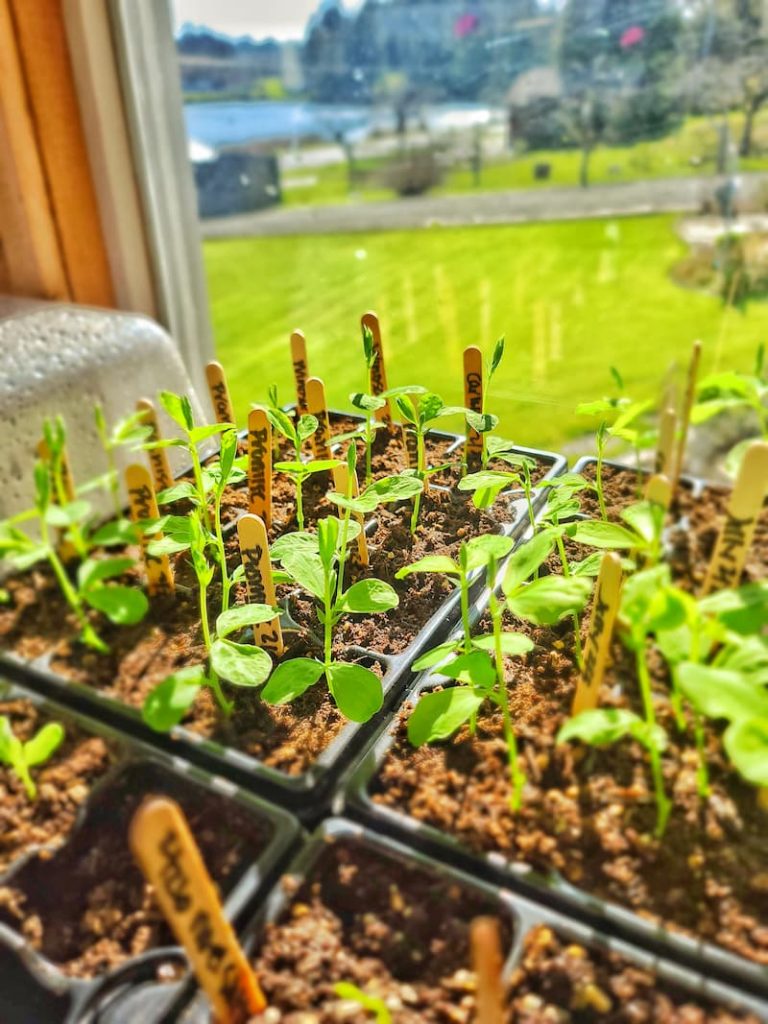
Tips to Make Hardening Off Easier
The Best Conditions for Hardening Off Plants and Seedlings
My best tip for hardening off plants is to check your weather forecast before you place seedlings outside each day to acclimate.
Strong winds and heavy rains can be damaging, so skipping the wet, windy days is a good idea. Wait until the weather is calm and dry before starting the process of hardening off your plants.
The best time to harden off plants is in the morning or early evening when the temperature is cooler. You want to avoid the heat of the day and choose the less intense morning sun.
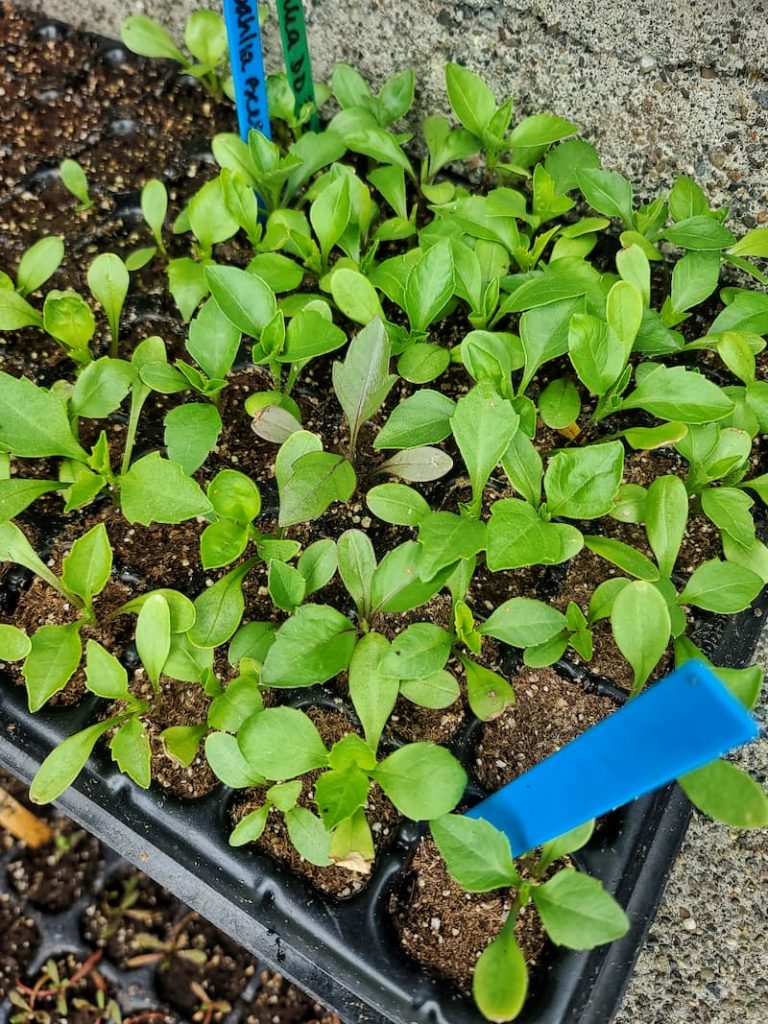
Water Your Plants
When watering your plants during hardening off, gradually increasing the amount of water they receive each day is important. You should start lightly watering the plants and increasing the amount as they become accustomed to their new home.
Water the plants until the soil is moist but not soggy. Avoid overwatering to prevent root rot and other issues.
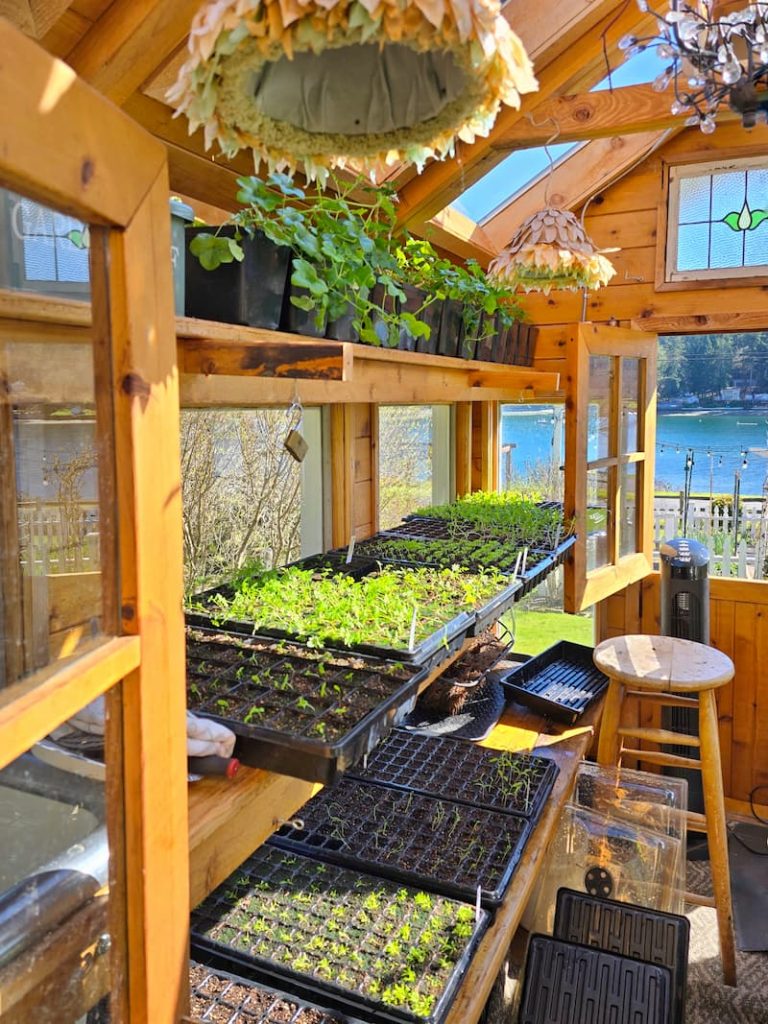
Hardening Off Seedlings in a Greenhouse
In the protection of a greenhouse, your tender plants get a taste of the outdoors, yet they’re shielded from the harsher elements of nature, like strong winds or a sudden chill.
Starting their transition in such a controlled environment allows for a gentle introduction to the temperature fluctuations and sunlight intensity they will face in the great outdoors.
You can gradually open the greenhouse vents and doors for about 7 to 10 days, inviting fresh air and natural light. I still go through the formal process of acclimating my seedlings outdoors, giving them all the opportunities they need to succeed.
Hardening Off Seedlings in a Cold Frame
Hardening off your seedlings in a cold frame is perfect for acclimating them to outdoor conditions while offering a buffer against unpredictable spring weather.
By gradually lifting the lid of the cold frame for 7 to 10 days, you introduce your seedlings to the elements in the most nurturing way possible. Each day, they get a little more sunlight, light wind, and some temperature swings they’ll soon grow accustomed to.
This process is as gentle as it is crucial, ensuring that when the time comes to transplant them into the garden, they’re robust, resilient, and ready for whatever comes their way.
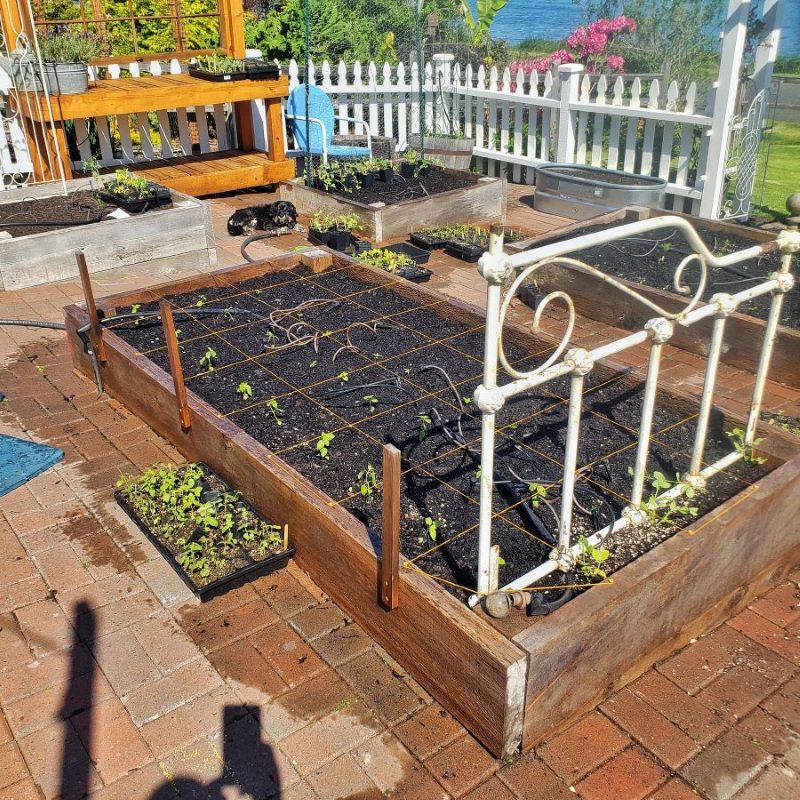
Transplant Your Acclimated Plants and Seedlings in the Garden
Your plants should be ready to be transplanted into the garden after 7-10 days of acclimating to their new environment.
Avoid planting on a sunny day, and pick a cloudy day instead. Early mornings and overcast days are best to keep the plants from going into shock. Water thoroughly after planting.
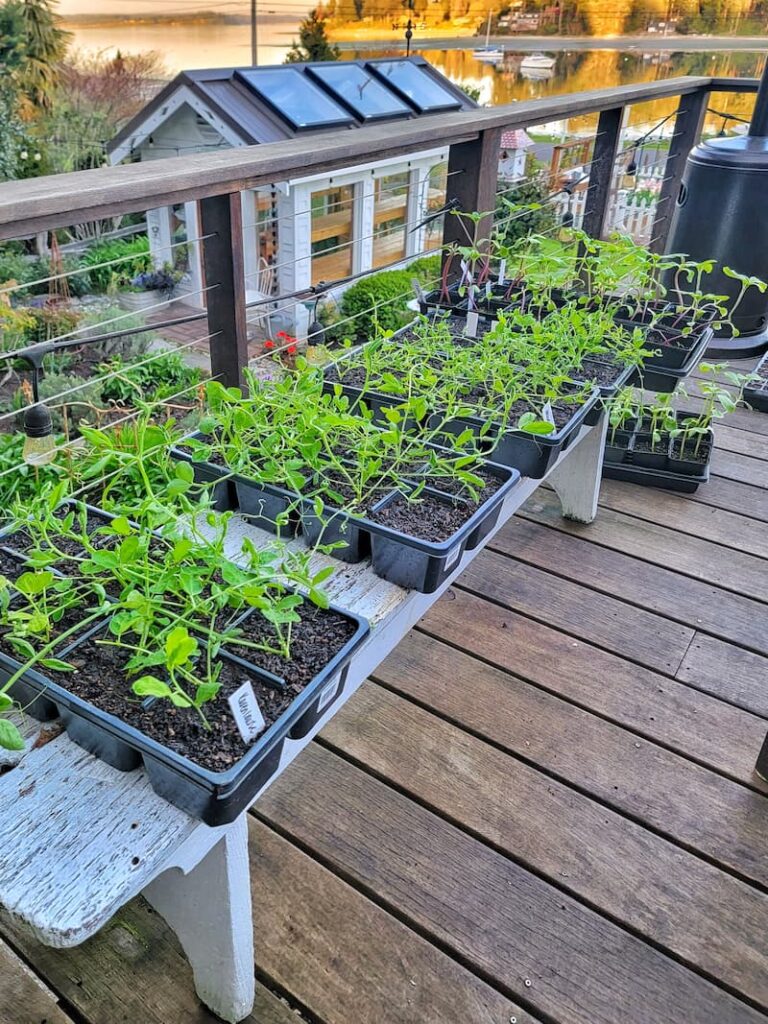
Common Questions About Hardening Off Seedlings
Can You Skip Hardening Off Seedlings?
Skipping the hardening off process is risky and can lead to a lot of stress for your young plants. It’s a crucial step in gardening that prepares your seedlings for the stark differences between the cozy indoor environment and the unpredictable outdoor world.
Without this gradual acclimation, seedlings can suffer from shock. This shock can manifest as sunburned leaves, stunted growth, or, in the worst-case scenario, the loss of your plants.
You might be tempted to cut corners if you’re short on time or caught off-guard by the season. But even a shortened period of hardening off is better than none. A few days of gradually increasing outdoor exposure can make a significant difference in helping your plants adjust.
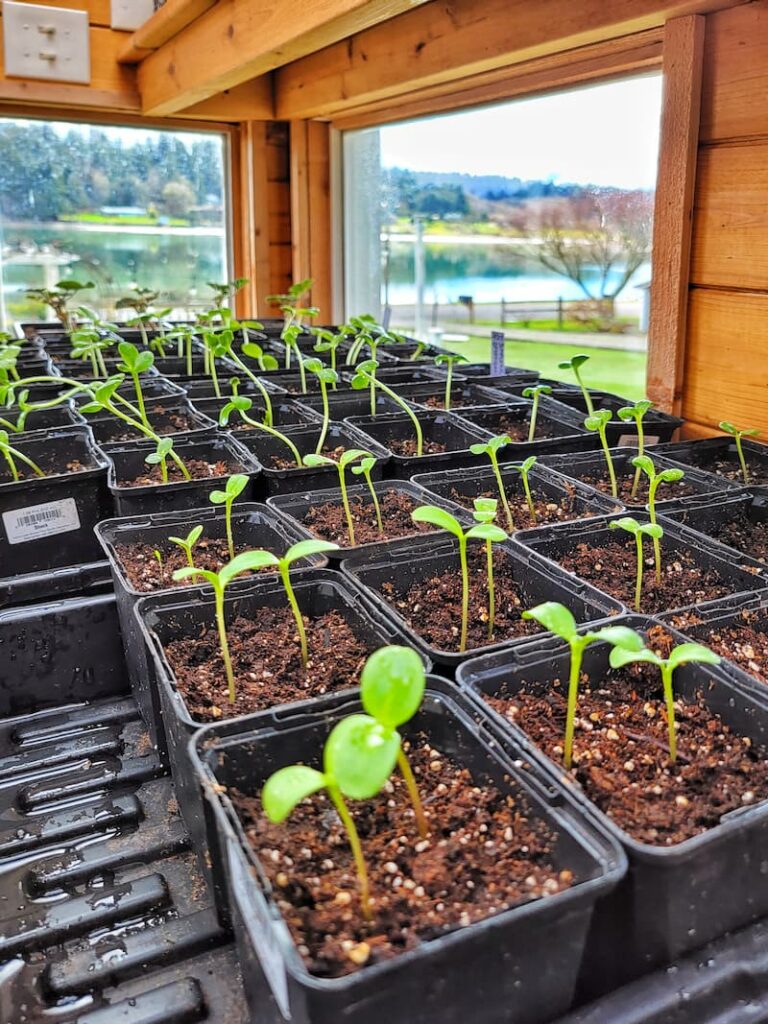
How Long Should You Harden Off Seedlings?
The process of hardening off your seedlings typically spans about 7 to 10 days. This period allows them to gradually adjust to the outdoor conditions they’ll face in their permanent garden spots.
What is the Fastest Hardening Process?
An expedited process can be condensed into about 5-7 days, focusing on quickly acclimating your plants to outdoor conditions while minimizing shock. Here’s how you can speed things up without skipping the essential steps:
Keep a close eye on weather conditions, particularly unexpected cold snaps or extreme heat, and be ready to intervene with protection if needed. Even in a hurry, the goal is to nurture resilient plants ready for a season of growth and productivity in your garden.
‘Growing a Cut Flower Garden’ Series
Learn about the ins and outs of growing a cut flower garden this year. Click the button below to be taken to the entire series of blog posts and choose what is interesting to you.
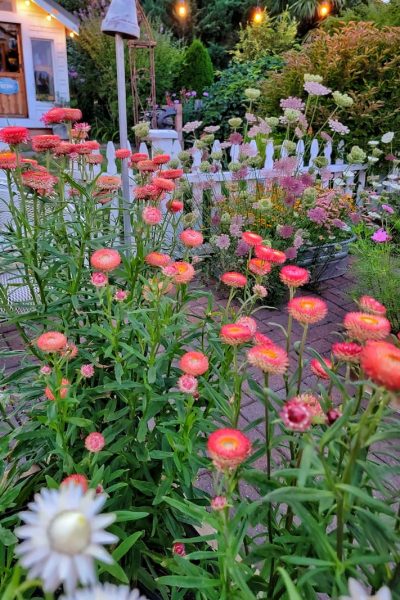
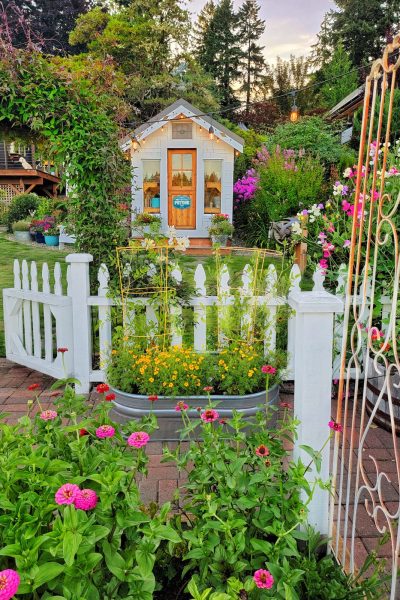
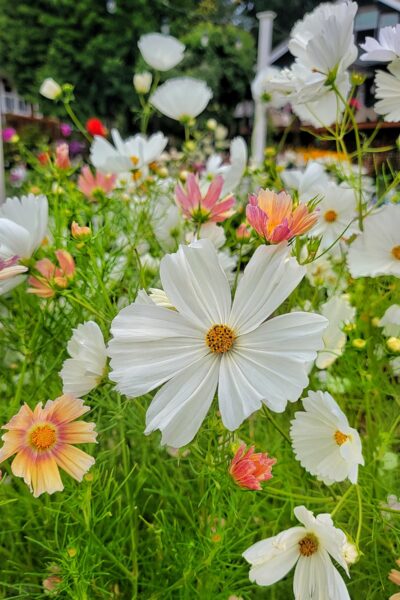
Can You Harden Off Seedlings in the Rain?
Yes, you can harden off seedlings in the rain, providing a gentle introduction to the outdoor world, offering natural humidity, and avoiding the potential for the soil to dry out too quickly. However, there are some considerations to ensure your seedlings don’t go from cozy indoor life to a stressful, soggy nightmare.
Light Rain and Overcast Conditions
If the forecast calls for light rain and overcast skies, this can be ideal for hardening off seedlings. The cloud cover prevents harsh sunlight from stressing the plants, and the rain gently introduces them to natural watering conditions.
Ensure the rain is light and not part of a storm that could bring strong winds or hail, damaging delicate seedlings.
Protect from Heavy Rain
During periods of heavy rain, your seedlings can be at risk of being battered or even washed away, especially if they’re not yet accustomed to such conditions.
If heavy rain is expected, consider providing some cover for your seedlings or waiting until the weather is milder. A simple solution is to use a transparent plastic cover that allows light in but keeps the heavy rain out, ensuring your seedlings don’t drown or get damaged.
Watch the Temperature
Rain often brings cooler temperatures. While a gentle shower in mild weather can be beneficial, cold rain can shock and stress young plants. Protecting your seedlings by bringing them back indoors or providing a shield against the cold is best if temperatures drop too low.
Ensure Good Drainage
Make sure your seedlings are in containers with good drainage to prevent waterlogging. Excessive water can cause root rot and other issues, so while a little natural rainwater is beneficial, too much without proper drainage can be harmful.
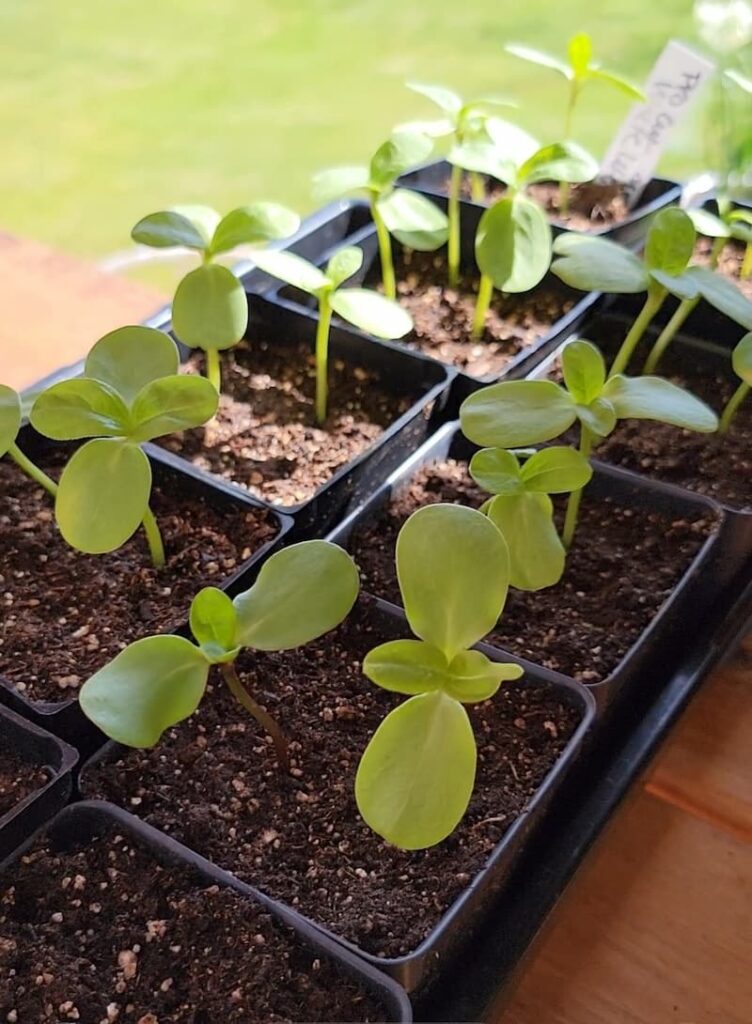
How to Know When Seedlings are Ready for Transplanting?
True Leaves
Your seedlings should have several sets of true leaves, which emerge after the initial seed leaves (cotyledons). True leaves indicate that the seedling has moved beyond the earliest growth stage and is beginning to mature.
Root Development
A healthy root system is crucial for a successful transplant. Gently check the bottom of your seedling container; if you see roots starting to emerge from the drainage holes, it’s a good sign they’re ready. The roots should be white or light-colored and healthy-looking, not circling densely in the pot, which indicates they’re becoming root-bound.
Sturdy Stem
Look for a strong stem that can hold up the seedling. If your seedlings seem leggy (tall and thin) and struggle to stand up on their own, they might need more light before being transplanted.
Size
While size can vary widely depending on the type of plant, most seedlings are ready to transplant when they are a few inches tall. At this stage, they are usually robust enough to handle the move.
Overall Health
Healthy seedlings are vibrant and green, with no signs of yellowing, wilting, or disease. They should appear vigorous and not stressed.
Garden Supplies and Tools
Check out my favorite garden supplies and tools for the growing season. Whether you’re looking for potting soil or deer repellent, you’ll find what I use in my own garden.
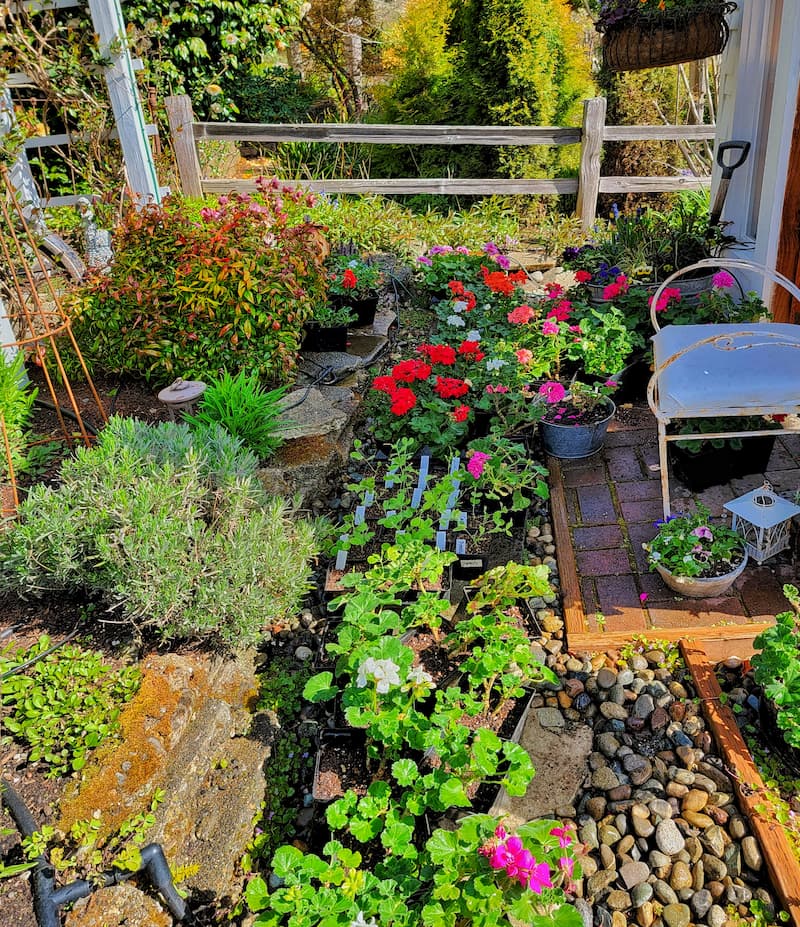
It is important to harden off your seedlings and plants before transplanting them from indoors to garden beds in the spring. Moving trays of plants in and out daily can be hard work, but it is a great start to a healthy garden.
Acclimatizing helps reduce the risk of shock or transplant failure. It’s also a great way to allow your plants to adjust to changes in their environment and the harsher elements of outdoor life.
If you have any questions or additional suggestions, please share them in the comments below. And be sure to share this blog post link with anyone who may find these gardening tips useful.
Until next time,
Happy Gardening!

Follow Me for More Inspiration
Shop my Amazon Storefront, LTK sources, and favorite home decor, garden, and lifestyle products. When you purchase from one of my links, I earn a small commission, which helps me continue sharing all the content you expect on my blog.
Be sure to follow me on Pinterest, Instagram, Facebook, TikTok and LIKEtoKNOW.it. Do you like gardening? Join my Facebook Gardening Tips & Tricks group.

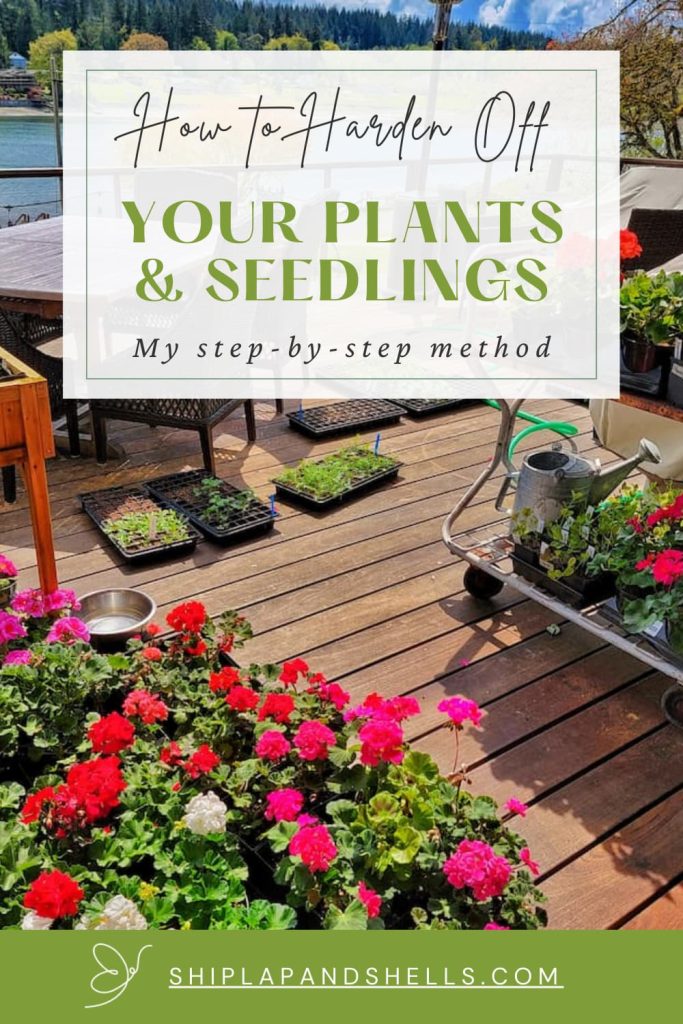

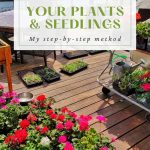
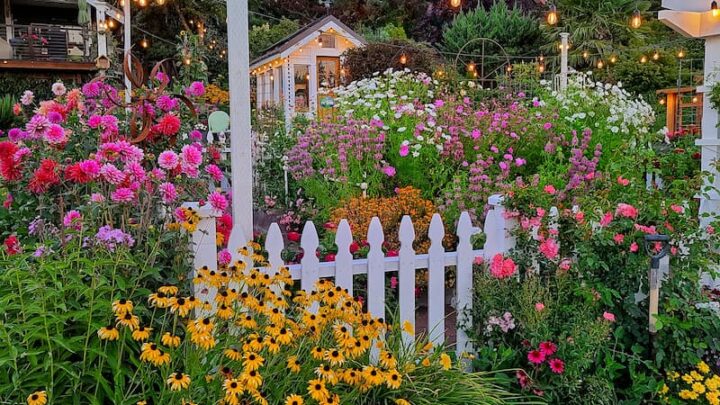
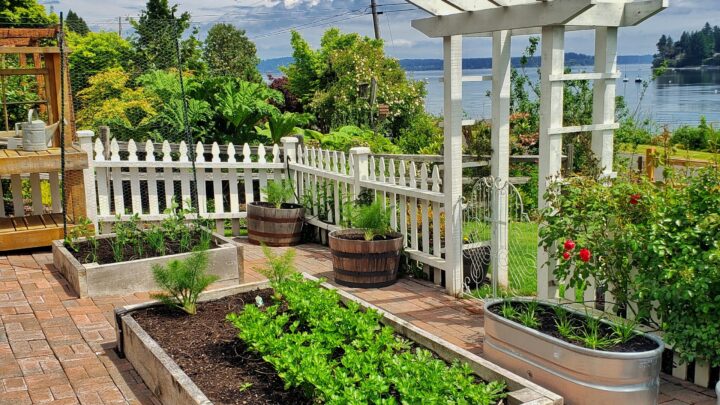
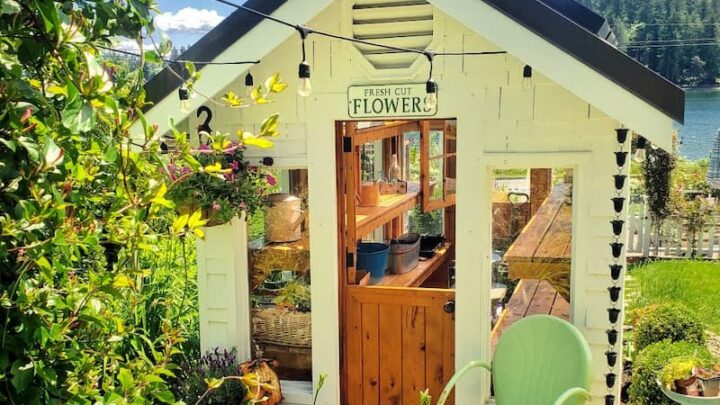
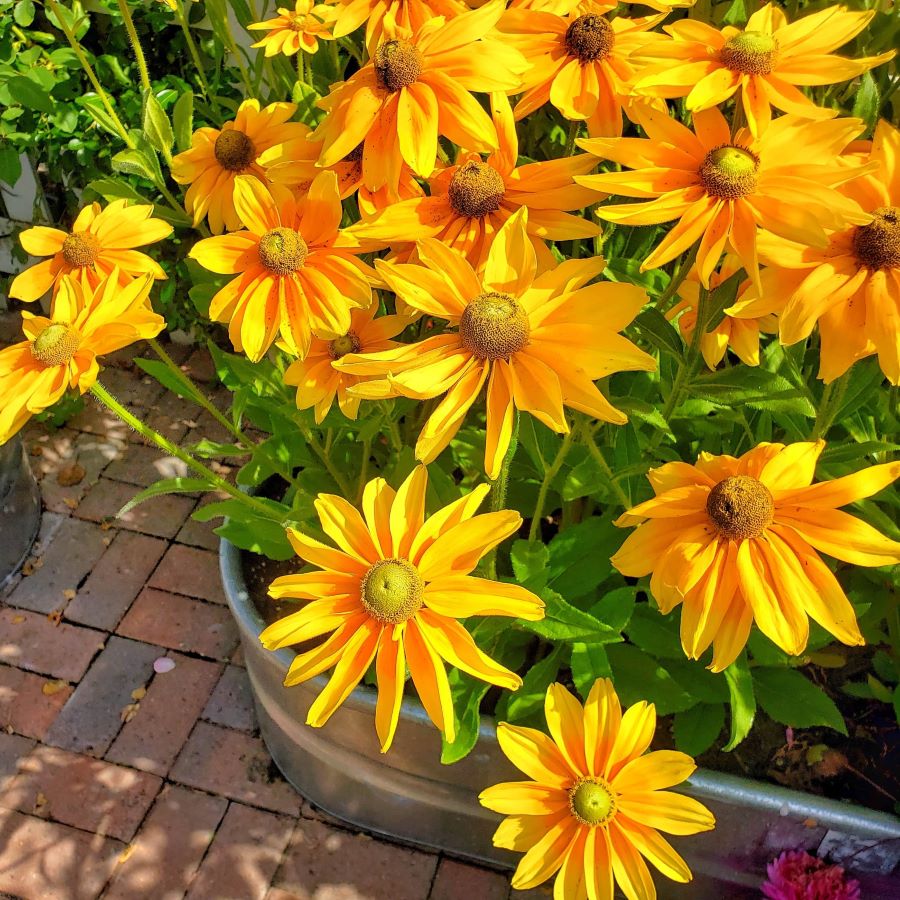


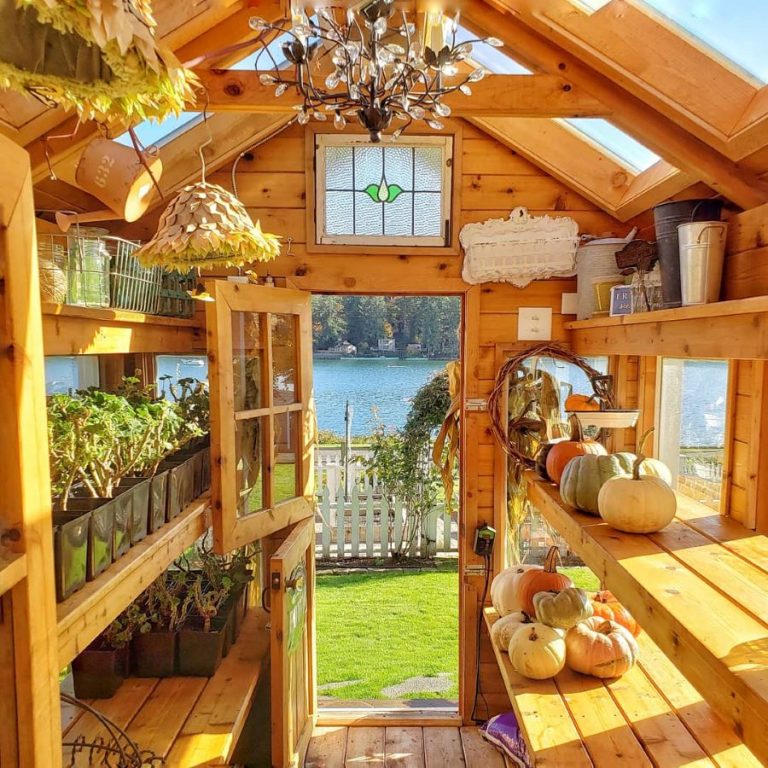
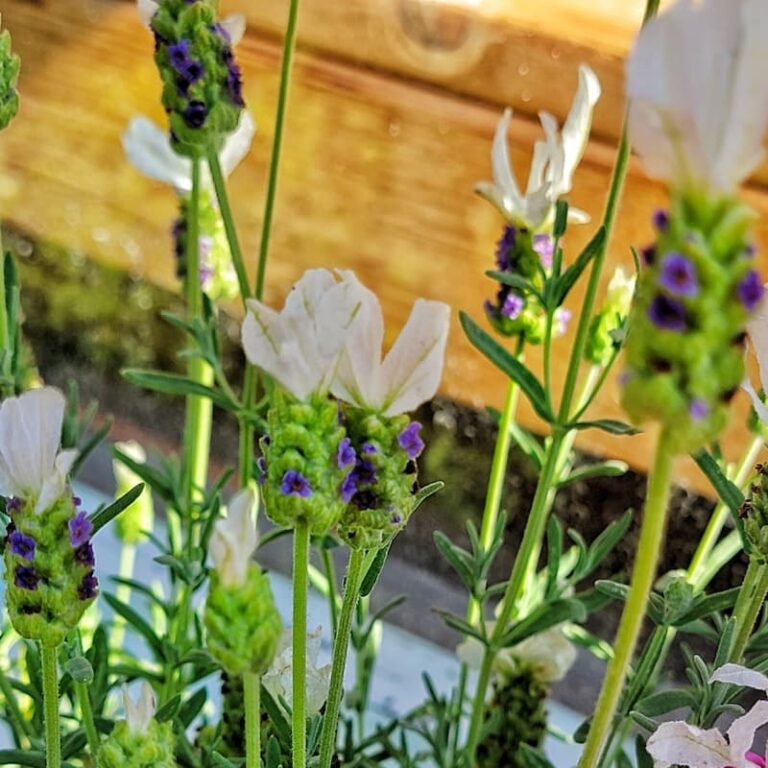
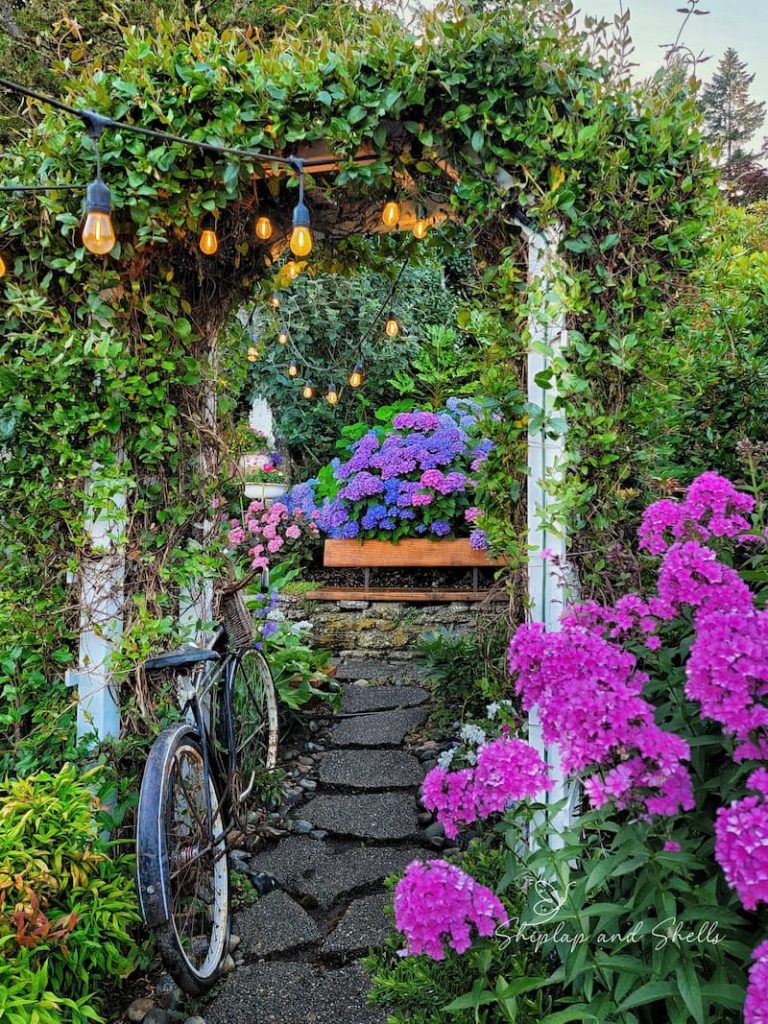
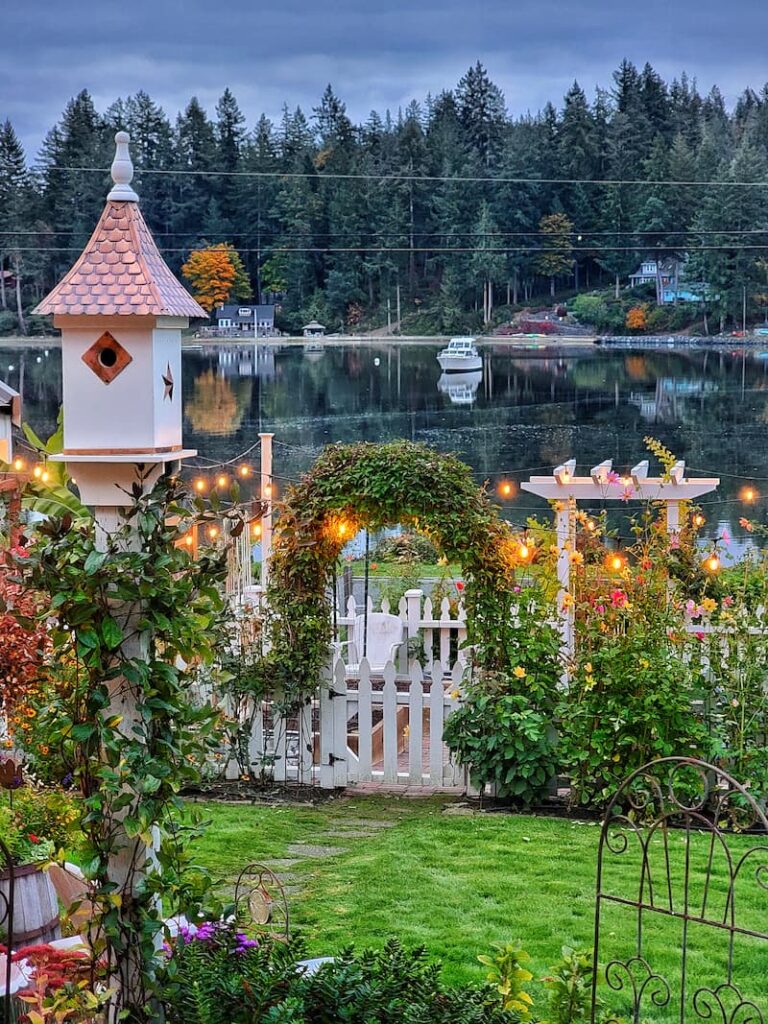
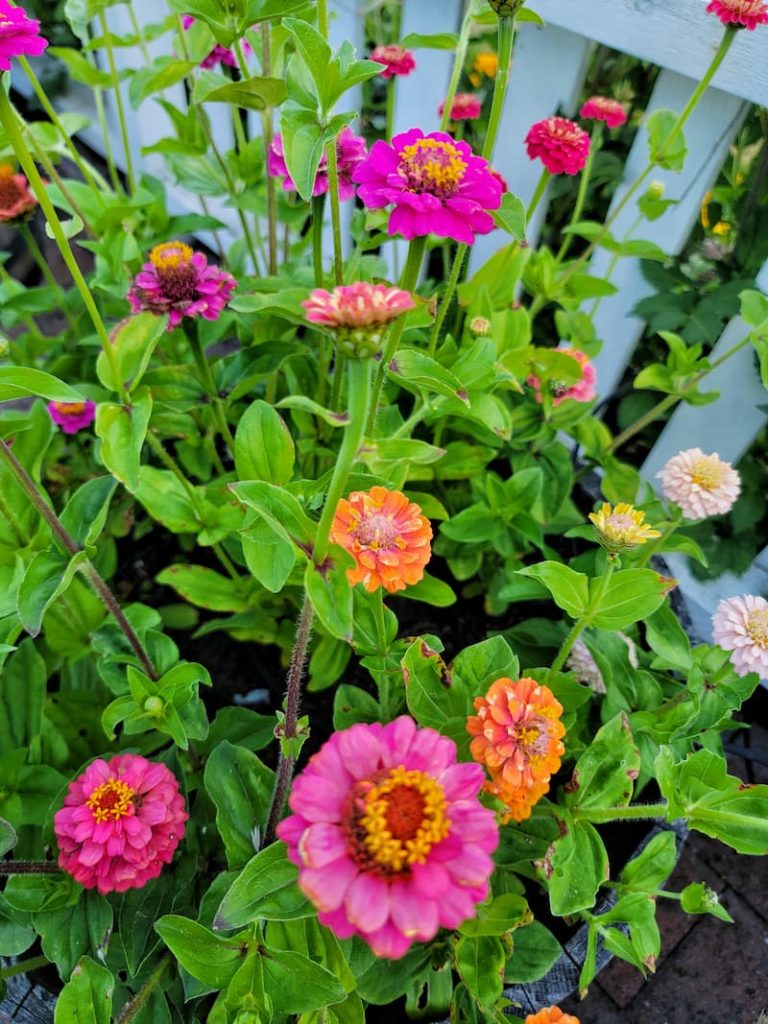
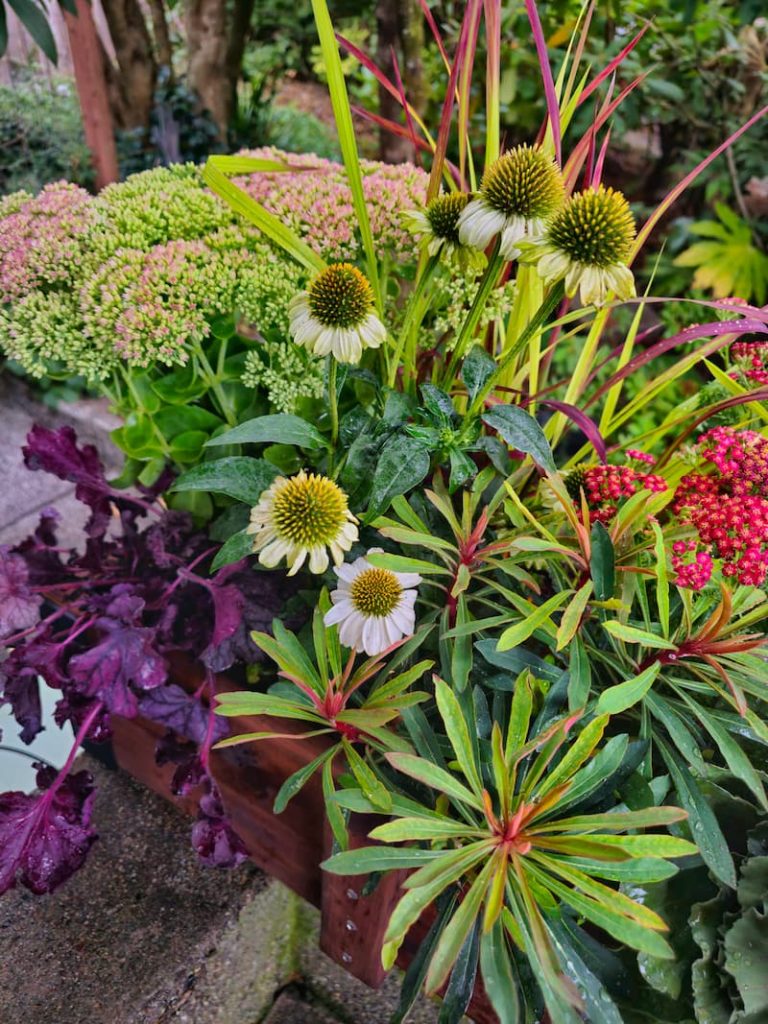
I have to tell you, it’s a lot of fun going through this process with someone. Especially when you live so far away, I love seeing how different our growing times are different.
Your seedlings look amazing! I am ready to put my snapdragons and sweet peas in the ground this week. And then I’m starting to harden off a few others before the onslaught of seedlings makes their journey to the outdoors. So fun! Can’t wait to see your garden this year! It’s already off to a great start!